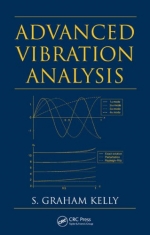Tab Article
Features a unified mathematical theory for the vibrations of discrete and continuous systems derived from calculus variations and linear algebra.
Develops a framework for the formulation and analysis of vibration problems for conservative and non-conservative discrete and continuous systems.
Uses energy inner products as a framework to develop methods to approximate the solutions of vibration problems.
Includes recent applications such as vibrations of nanotubes.
Illustrates how the physics of a problem can be used to develop a more specific framework for the analysis of that problem, including the determination of an exact solution.
Includes proofs of important results, especially proofs that are themselves instructive for a comprehensive understanding of the result.
Delineating a comprehensive theory, Advanced Vibration Analysis provides the bedrock for building a general mathematical framework for the analysis of a model of a physical system undergoing vibration. The book illustrates how the physics of a problem is used to develop a more specific framework for the analysis of that problem. The author elucidates a general theory applicable to both discrete and continuous systems and includes proofs of important results, especially proofs that are themselves instructive for a thorough understanding of the result.
The book begins with a discussion of the physics of dynamic systems comprised of particles, rigid bodies, and deformable bodies and the physics and mathematics for the analysis of a system with a single-degree-of-freedom. It develops mathematical models using energy methods and presents the mathematical foundation for the framework. The author illustrates the development and analysis of linear operators used in various problems and the formulation of the differential equations governing the response of a conservative linear system in terms of self-adjoint linear operators, the inertia operator, and the stiffness operator. The author focuses on the free response of linear conservative systems and the free response of non-self-adjoint systems. He explores three method for determining the forced response and approximate methods of solution for continuous systems.
The use of the mathematical foundation and the application of the physics to build a framework for the modeling and development of the response is emphasized throughout the book. The presence of the framework becomes more important as the complexity of the system increases. The text builds the foundation, formalizes it, and uses it in a consistent fashion including application to contemporary research using linear vibrations.


